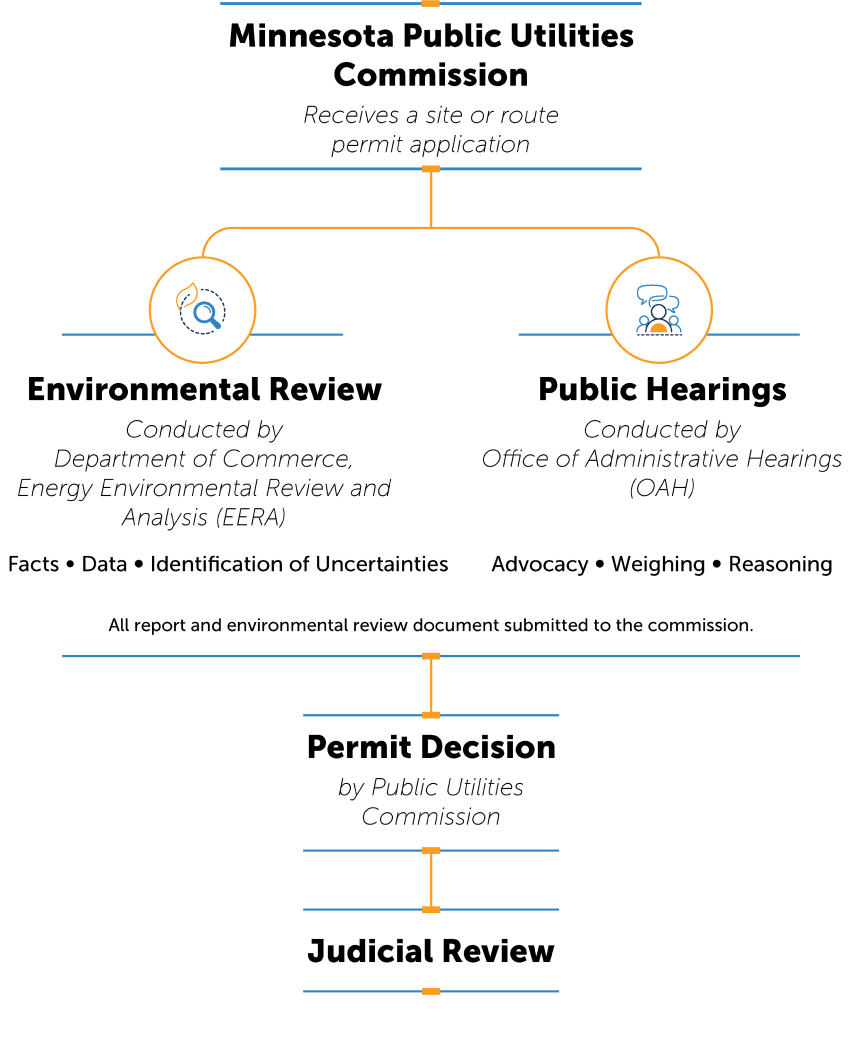Library
On this page:
Project documents
- Project overview
- Approved Certificate of Need and Route Permit
- Routing opportunities and constraints
- Routing process
- Permitting and agency coordination
- Minnesota Public Utilities Commission: Permitting process overview
- Minnesota Public Utilities Commission: Energy facility permitting process flowchart
- University of Minnesota Duluth: Economic Impact Analysis
General
Routing & regulatory
Miscellaneous
- Right-of-way process
- Field surveys
- Vegetation Management Plan
- Agricultural Impact Mitigation Plan
- Typical structures handout
- Construction, restoration and maintenance
Real estate & field work
Construction
Regulatory process
Click to enlarge
- Minnesota Public Utilities Commission receives a site or route permit application
- Environmental Review conducted by Department of Commerce, Energy Environmental Review and Analysis, finding facts, data and identifying uncertainties
- Public Hearings conducted by Office of Administrative Hearings for advocacy, weighing and reasoning
- All report and environmental review document submitted to the commission.
- Permit Decision by Public Utilities Commission
- Judicial Review
- August 2023: We submitted our proposed route in our application for a Certificate of Need and Route Permit to the Minnesota PUC.
- October 2023: The PUC and Department of Commerce held scoping meetings in October 2023 and through that process identified routing alternatives to be evaluated in an Environmental Assessment.
- March 2024: An Environmental Assessment Scoping Decision was published in March 2024.
- June 2024: An Environmental Assessment was published by the Department of Commerce on June 28, 2024.
- July 2024: Public hearings held on the project July 22 - 26, 2024.
- November 2024: Proposed Findings of Fact, Conclusions of Law, and Recommendation was published on November 8, 2024.
- January 2025: The Minnesota Public Utilities Commission issues oral decision approving Certificate of Need and Route Permit. The official permit documents will be posted once available.
- February 28, 2025: The Minnesota Public Utilities Commission approved the Certificate of Need and Route Permit. View the PUC Order.
Approvals, applications, and permitting documents
- Approved Certificate of Need and Route Permit
- Final PUC Order
- Proposed Findings of Fact, Conclusions of Law, and Recommendation
- Environmental Assessment
You can subscribe to receive updates from the PUC. Visit edockets.state.mn.us and enter the docket number you're interested in tracking:
- Certificate of Need use docket 22-416
- Route Permit use docket 22-415
Visit eDockets for additional documents


